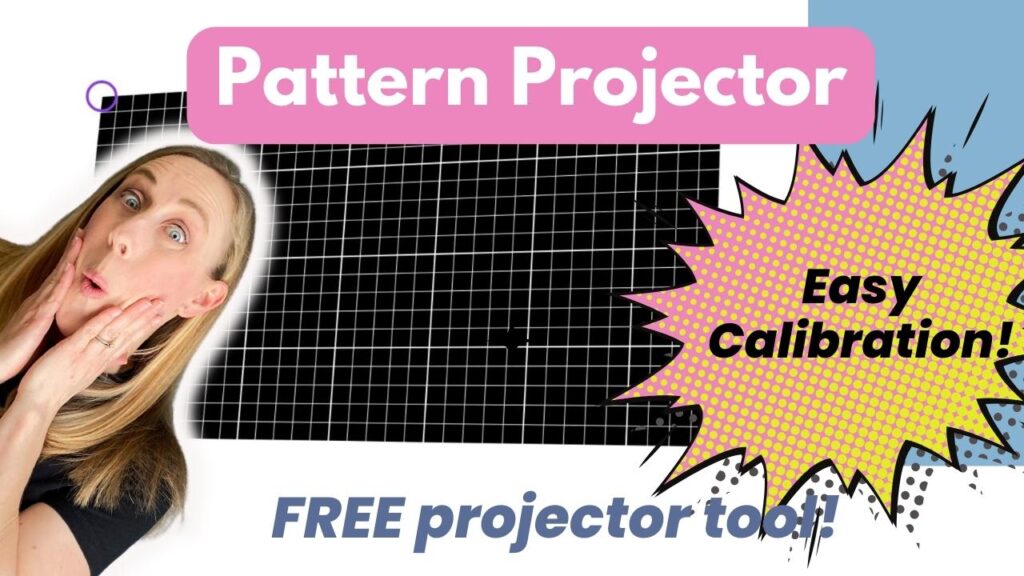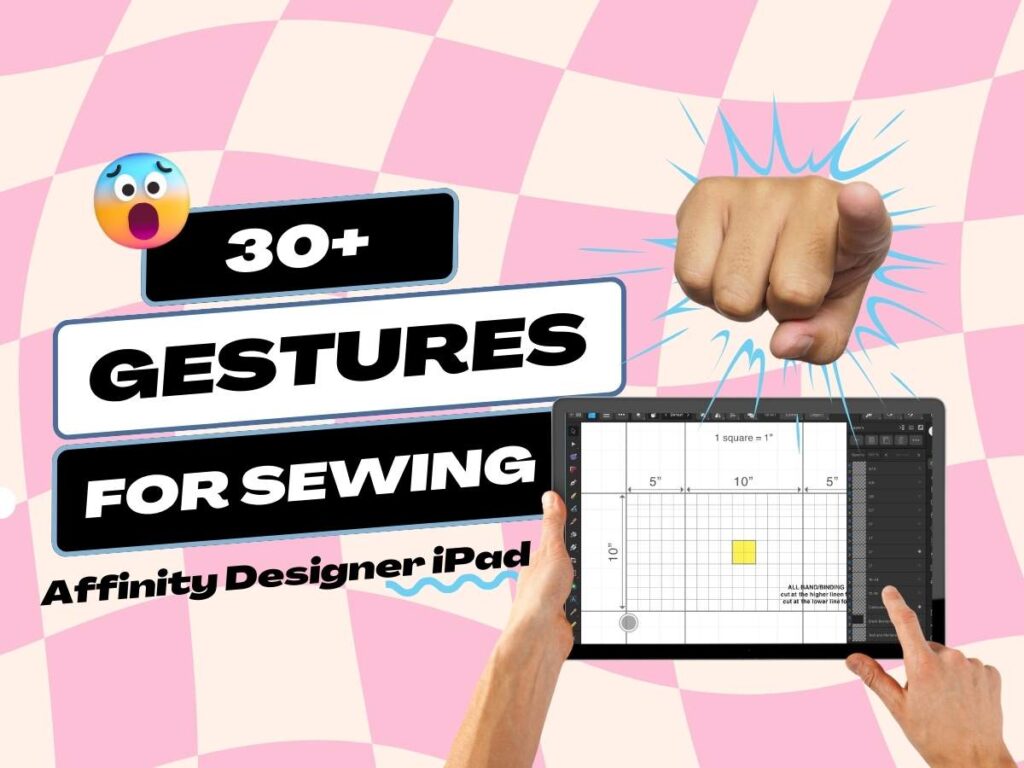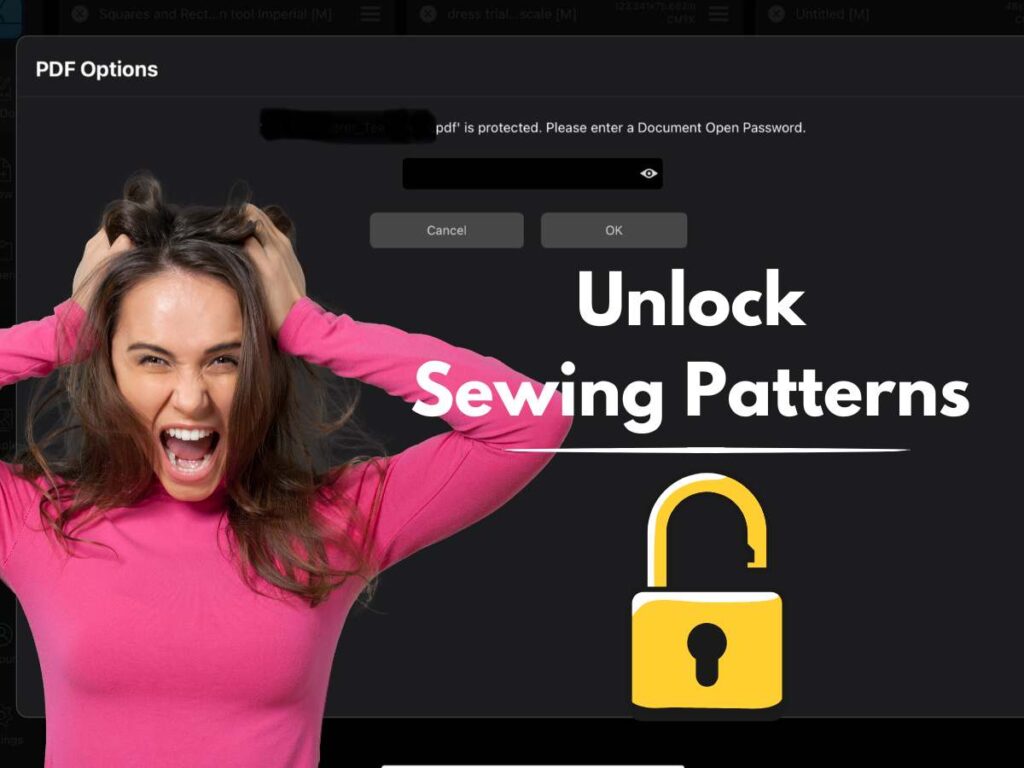*This post may contain affiliate links and we may earn a small commission if you click on them.
Have you ever wanted to learn how to make bias tape? How about making your own bias tape using a projector?!
I was recently working on a project that needed bias tape, but I wanted it to match the project exactly. That is the great thing about making your own tape; you can match your project exactly!
My favorite way to make bias tape is by making one continuous strip and only sewing two straight lines.
I love the tutorial by Make It, Love It! This is how I originally learned this method. If you need more visuals and instructions, definitely check out her post!
But I wanted to take it a step further and make it projector friendly!
I have included a free projector file with templates! No need to measure!
Never heard of sewing with a projector? Then, make sure to check out the Get Started Page. You can still make this without a projector! You will need to measure the squares instead of using the pattern.
What Size Bias Tape Do You Need?
You can use the formula below to figure out the width that you need to cut your bias tape strips. I have already included markings on the pattern for ½” and 1” single-fold bias tape, and ¼” and ½” double-fold bias tape.
For single-fold bias tape multiply your needed width by 2.
For example: If you need ½” single-fold bias tape you will need to cut 1” strips. (1/2-inch x 2 = 1 inch)
For double-fold bias tape multiply your needed width by 4.
For example: If you need ½” double-fold bias tape, you will need to cut 2” strips. (1/2-inch x 4 = 2 inches)
How much bias tape do you need to make?
Most pre-packaged bias tape comes in three yards. You can make about 94” (2.6 yards) of 2” tape with a 14 ½ inch square of fabric and 191” (5yds) of 2” tape with a 20 1/2-inch square.
- 8 ½” square gives you about 29 inches of 2” bias tape and about 58” of 1” bias tape.
- 14 ½” square gives you about 94 inches (2.6 yards) of 2” bias tape and about 188 inches (5.2 yards) of 1” bias tape.
- 20 ½” square gives you about 191 inches (5 yds) of 2” bias tape, and 382 inches (10 yds) of 1” bias tape
Don’t worry about measuring! I’ve created a projector pattern file just for you! See below to download!
Materials:
- Cotton Fabric Scraps (size depends on the amount you are making)
- Water soluble marker or FriXion pen
- Iron
- Pins or clips
- Scissors or Rotary cutter
- Bias tape maker (optional)
- Sewing Machine
- Projector
- FREE Pattern
Step 1: Cut a Square of Fabric
Once you have decided on the size you need, use the free pattern to cut out a square piece of fabric. I used a fabric sample from my friend Brittany Lane Designs. She has so many fun prints!
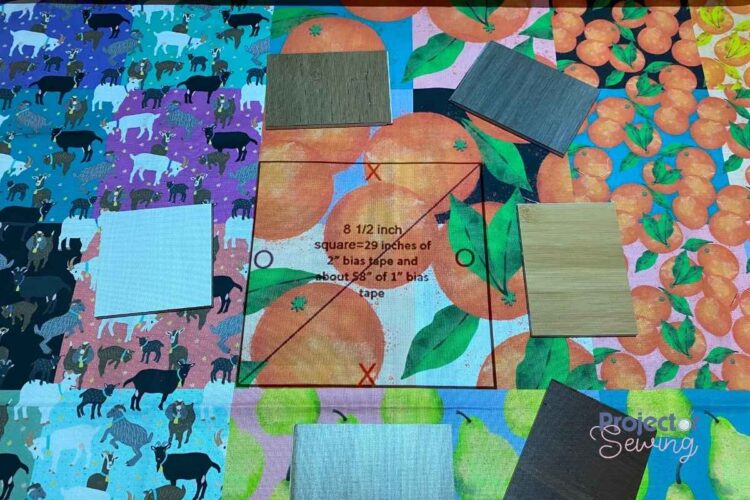
Step 2: Draw and Cut
Using the markings on the pattern, draw an “X” on the top and bottom. Then, draw an “O” on the right and left. Cut the square along the diagonal line.
Step 3: Match and Sew
Match one “X” to the other “X” with the right sides together. There will be a small tip of fabric hanging off on both ends. Sew using a ¼” seam allowance.
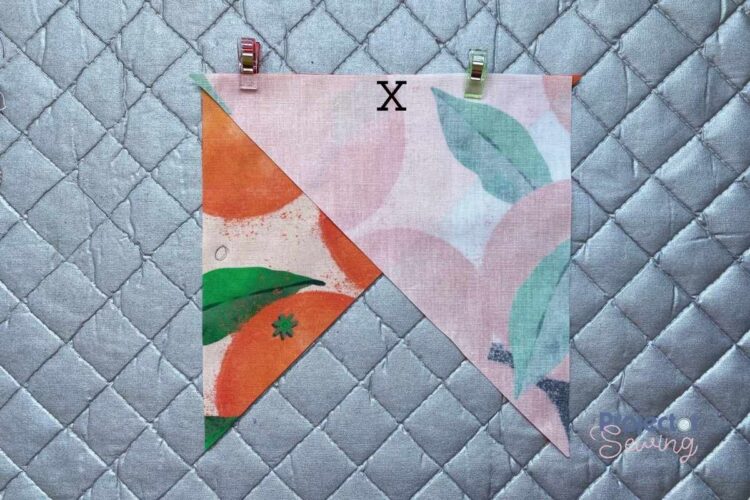
Step 4: Iron and draw
Open up the seam and iron it flat. Go back to the projector pattern or use a ruler to measure 1” or 2” lines. Line up the long side of the parallelogram with the bottom line on the pattern. Place the fabric right-side down. Using a marker or pen, draw the lines on the fabric.
You may end up with a little bit of extra fabric at the top. Just trim it off.
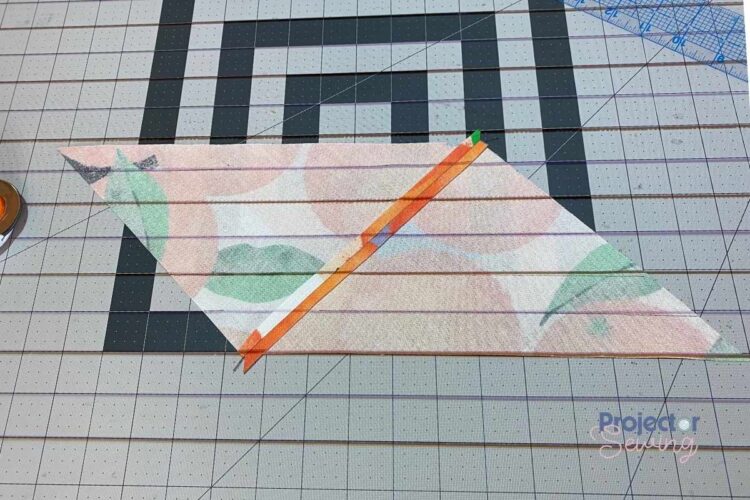
Step 5: Fold and Sew
This is the tricky part, but where it all comes together! With the right side up, fold the sides of the parallelogram to the center of the fabric. It should start to form a square. You might even notice your lines starting to line up!
Next, pull one corner of the fabric so that the lines shift and line up with the line above it. It may feel awkward with the fabric at first, but keep going! The goal is to have the lines intersect ¼” down so they will line up after sewing.
Pin or clip the edges together and sew using a ¼” seam allowance.
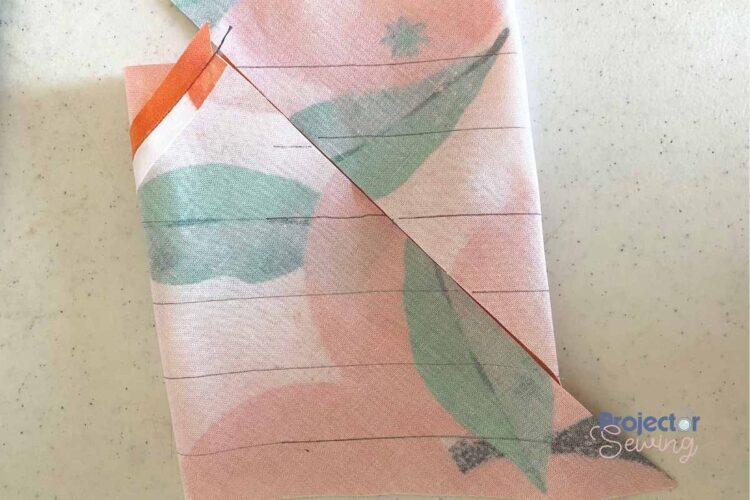
Step 6: Iron and Cut!
Iron open the seam as best you can. Then, using scissors, carefully cut along the line that you made.
Step 7: Complete Bias Tape!
Now you should have one continuous line of bias tape! You can make the single or double-folds now if you like, or save them for when you need them!
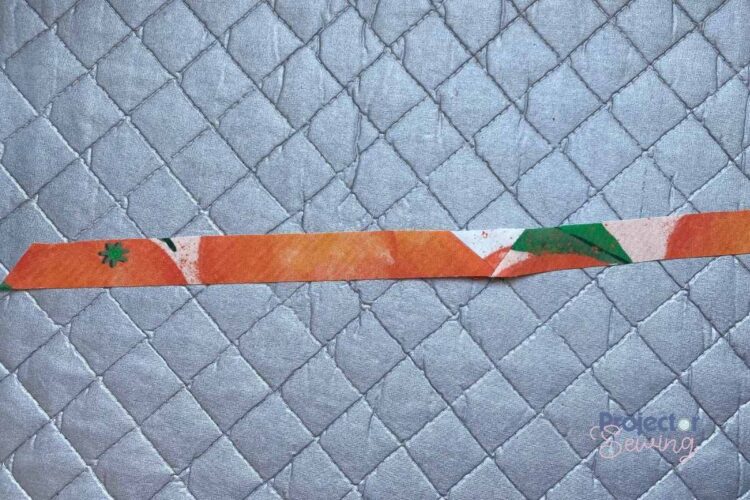
You can fold it by hand, but I love to use these bias tape maker tools! They make it so much quicker and easier!
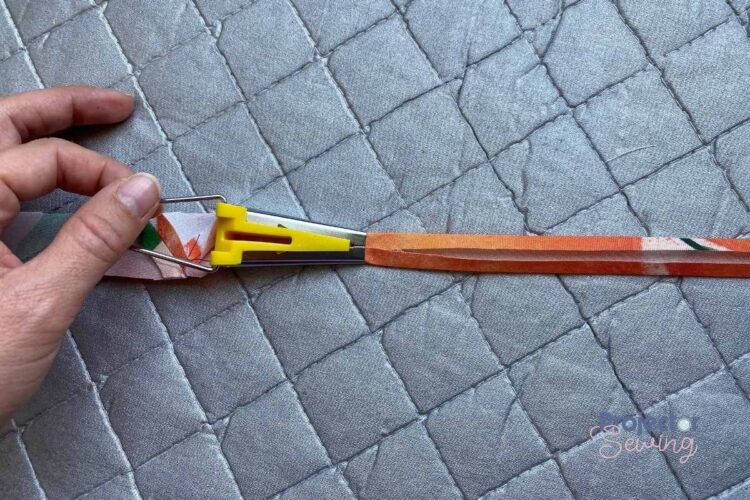
Keep practicing and you’ll be a pro at making bias tape!
Happy Sewing!


